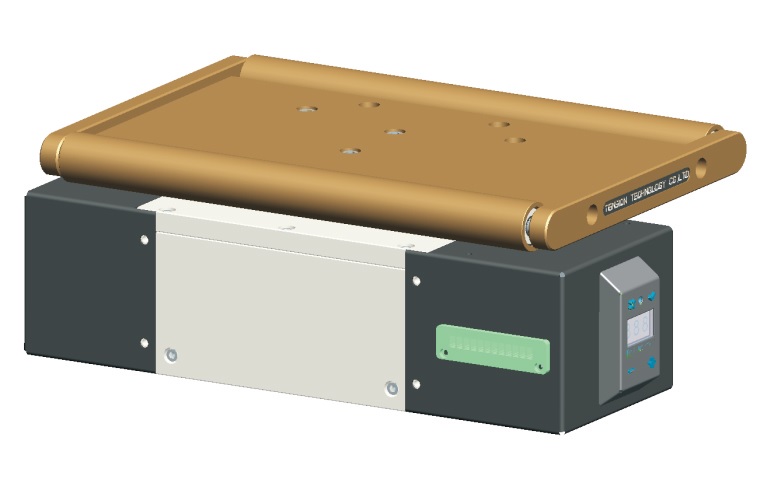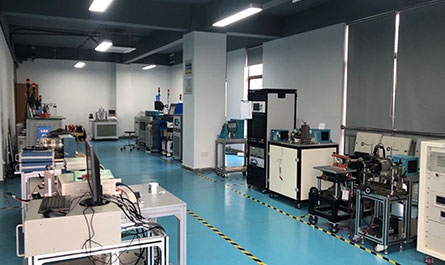In a world where accuracy isn’t just a luxury but a necessity, industries are racing to adopt tools that redefine what’s possible. Enter high-precision force sensors: the unsung heroes behind breakthroughs in robotics, aerospace, healthcare, and beyond. These tiny marvels are transforming how we measure, analyze, and optimize force—ensuring every gram, newton, and pound is accounted for with jaw-dropping precision.
But why should *you* care? Let’s dive into the invisible force shaping our technological future.
------
THE SCIENCE OF ACCURACY: WHAT MAKES HIGH-PRECISION FORCE SENSORS UNIQUE?
------
Imagine building a robot that performs delicate surgery or a drone that lifts heavy cargo without wobbling. Both feats rely on one thing: sensors that detect force variations as subtle as a heartbeat. Unlike traditional sensors, high-precision variants operate at resolutions down to 0.01% of their full scale. That’s like weighing a grain of sand on a truck scale—and getting it right every time.
How do they pull this off? It’s all about advanced materials and smart design:
- **Strain Gauges Reinvented**: Modern sensors use micro-machined silicon or quartz elements, minimizing drift and thermal noise.
- **AI-Driven hysteresis brake **: Self-learning algorithms adjust for environmental factors like temperature and humidity in real time.
- **Cross-Axis Rejection**: Even if force is applied at awkward angles, the sensor isolates the true measurement.
------

INDUSTRY SPOTLIGHT: WHERE THESE SENSORS ARE MAKING WAVES 🌊
------
1. **Medical Robotics**: Picture a surgical robot suturing a blood vessel thinner than a human hair. High-precision force sensors provide tactile feedback, letting surgeons “feel” through the machine. Companies like Intuitive Surgical have integrated these sensors to reduce complications by 40% in minimally invasive procedures.
2. **Electric Vehicle (EV) Manufacturing**: Battery safety is non-negotiable. When assembling lithium-ion packs, sensors ensure each weld applies the exact force needed—too little causes weak joints; too much risks explosions. Tesla’s Gigafactories use thousands of these sensors daily to maintain their reputation for reliability.
3. **Aerospace Testing**: From jet engines to Mars rovers, every component undergoes brutal stress tests. Engineers at NASA’s JPL rely on ultra-precise sensors to simulate extraterrestrial conditions, ensuring equipment survives launch G-forces and subzero Martian nights.
4. **Consumer Tech**: Ever wondered how your smartphone screen distinguishes a tap from a press? Force sensors embedded beneath the display enable features like 3D Touch, creating smoother, more intuitive interactions.
------
THE COST OF IMPERFECTION: WHAT HAPPENS WHEN FORCE MEASUREMENT FAILS? 💸
------
A misaligned sensor isn’t just a tiny error—it’s a domino effect. Consider these real-world disasters:
- In 2018, a pharmaceutical factory recalled $12M worth of injectable drugs after faulty sensors caused overpressurization during vial filling, cracking glass containers.
- An automotive supplier faced lawsuits when defective torque sensors led to wheel detachment in over 5,000 vehicles.
- A robotics startup folded after its warehouse bots repeatedly dropped packages due to “force feedback lag,” eroding client trust.
High-precision sensors aren’t an expense; they’re insurance against catastrophic losses.
------
CHOOSING THE RIGHT SENSOR: 5 QUESTIONS TO ASK BEFORE BUYING 🔍
------
Not all sensors are created equal. Before investing, ask:
1. **What’s the Operating Environment?** Will it face extreme temperatures, vibrations, or electromagnetic interference? Opt for ruggedized models with IP67+ ratings.
2. **Dynamic vs. Static Loads?** Measuring rapidly changing forces (e.g., engine vibrations) requires faster sampling rates (1kHz+).
3. **Output Compatibility?** Analog (mV/V) outputs suit labs, while digital (USB/CAN bus) integrates easier with IoT systems.
4. **Long-Term Stability?** Cheap sensors drift over time. Look for models with \u003c0.1% annual drift and onboard diagnostics.
5. **Support Ecosystem?** Does hysteresis brake , software APIs, or customization?
------
BEYOND THE DATA SHEET: REAL USER STORIES 🛠️
------
- *Dr. Elena Rodriguez, Biomechanics Researcher*: “We needed to measure tendon forces in athletes without invasive implants. These sensors, embedded in wearable straps, gave us lab-grade accuracy in the field. Our ACL injury prevention study wouldn’t have happened without them.”
- *Raj Patel, Industrial Automation Lead*: “Our assembly line for microchips had a 15% defect rate from inconsistent pick-and-place pressure. After switching to high-precision sensors, defects dropped to 0.3%. The ROI was instant.”
------
FUTURE TRENDS: WHERE FORCE SENSORS ARE HEADED NEXT 🚀
------
- **Self-Healing Materials**: Sensors that repair minor cracks using embedded nanoparticles, slashing maintenance costs.

- **Energy Harvesting**: Piezoelectric sensors that power themselves from mechanical vibrations, ideal for remote IoT devices.
- **Haptic Metaverse**: Ultra-low-latency sensors enabling realistic “touch” in VR/AR environments—imagine feeling fabric textures during virtual shopping.
------
YOUR NEXT MOVE: DON’T JUST MEASURE FORCE—MASTER IT 🏆
------
Whether you’re crafting tomorrow’s smart prosthetics or optimizing a factory floor, high-precision force sensors are the bridge between “good enough” and “flawless.” The difference isn’t just in the data—it’s in the confidence to innovate without limits.
Ready to upgrade your toolkit? Explore our sensor portfolio or chat with an engineer today. Because in the race for perfection, every micronewton counts. 💪
[END OF ARTICLE]
